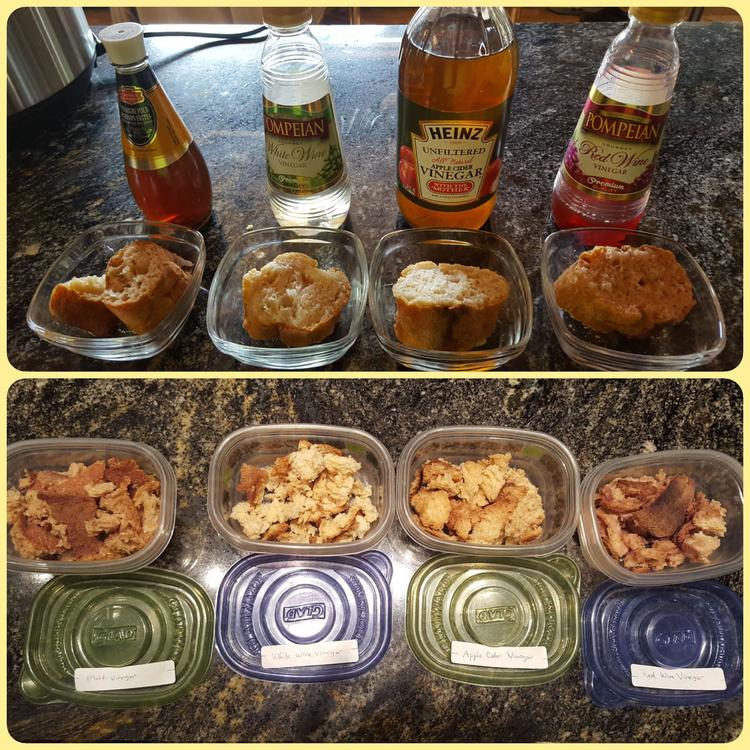Over in this topic about Alton Brown, a brand-new (to me) concept popped up: vinegar powder. @weinoo noted that Wylie Dufresne had been making and using it for quite some time, but I'd never heard of it before today. Bless her, @blue_dolphin posted a link to an article about it, with a recipe. The article, in Taste, is Vinegar: Now in Powder Form. The recipe is for Salt and Vinegar String Beans, excerpted with permission from the Superiority Burger Cookbook.
Well. I liked the idea of ordering vinegar powder, but I liked even better the idea of taking stale bread, soaking it in vinegar, drying it in a low oven, then grinding it. I especially liked it because I had half of loaf of once-excellent sourdough that has languished in a bag atop the refrigerator, waiting to become bread crumbs. I liked it even better because of the recipe for Salt and Vinegar String Beans. I love summer green beans, and I had just bought a couple of pounds.
How low should the oven temperature be, and for how long? I didn't know, and the article didn't say. Which vinegar might be best? It sounded like cook's choice, although the recipe in question called for malt vinegar. I divvied up the bread loaf into 4 sections for taste comparisons: malt vinegar, white wine vinegar, apple cider vinegar and red wine vinegar.
"Low oven" is pretty vague. Once the bread was well-soaked I pulled it apart and spread it onto carefully-segregated baking sheets. Two small pans' worth (the red wine vinegar and apple cider vinegar) went into my Cuisinart Steam Oven using convection bake mode. After 2 hours at 150F they were barely drying. I turned the bread, gave it another 2 hours at 175F, and then again another 2 hours. In the meantime, the breads from the other two vinegars went onto standard baking sheets in my standard oven, at 200F of convective baking. That process took around 2 hours. Note to self: in future, use 200F and use the higher air flow of the larger oven.
The top picture is of the original stale bread portions, getting their bath. The bottom picture is of the dried bread crumbs. They'll meet the food processor on another day, to be ground into smithereens and give interesting taste notes to foods. I'm looking forward to trying the green bean recipe in the next day or two.
Who else has tried this? Got any successes, failures or insights to report?





